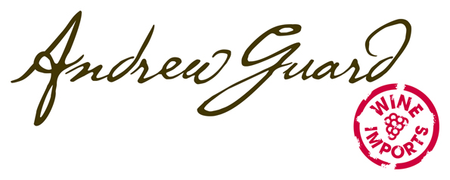Bruno Duchêne
Roussillon (Collioure)
Bruno Duchêne is originally from the Loire Valley where his family had a thriving business selling farm machinery. He then became a distributor of wild mushrooms in the Loire and Burgundy and discovered wine, particularly meticulous made, non-interventionist wines.
He then worked for nine months with Frederic Cossard of Domaine Chassorney in Saint Romain (where biodynamic farming is practised) and it was here that he learnt how to make wine. Today, he lives on the Côte Vermeille in the town of Banyuls sur Mer, where he produces stunning wine from his very steep hillside vines. This is the rocky stretch of land where the Pyrenees meet the Mediterranean; this is Catalonia. The dramatic and wild countryside, stunning colours and luminosity were captured artistically and made famous by Fauvist painters such as Matisse. Collioure’s nickname is the town of the painters (‘La cité des peintres’)
Bruno owns just 4 hectares spread over 4 areas, all on decomposed schistose soils at an altitude of around 300m - each parcel differing slightly in exposition. The vineyards in Collioure are extremely low yielding and, as they are planted on terraced hillsides, very difficult to work mechanically, which like in Germany's Mosel region, has contributed to a growing abandonment of these legendary sites. This is a great shame as the real character of any regions wines is defined by it's original terroir.
His vines are farmed organically, and because of the region's relatively warm, dry climate, Bruno only has to use a few sulfur treatments each year and because odium is not an issue here, copper is never used. In the winery; after a manual harvest and a rigorous selection there is 10-15 day cool maceration with a natural yeast, whole bunch ferment in 26hl Grenier wooden vats. The wines are bottled unfined and unfiltered and a small amount of sulfur is added at the bottling in most years.
Bruno produces three red wines: La Luna, Pascole and Anodine (Anodine only in magnum). They are all produced almost entirely from Grenache but also includes a little Carignan. Instead of highlighting different terroirs with separate bottlings, Bruno bottles based on his various farming practices. For La Luna, he lets grass grow free. Pascole is partially ploughed by hand. Finally, Anodine represents the areas that are impossible to work mechanically, and where the soil work has to be done entirely by hand. He also produces an exquisite white, Vallpompo, from Grenache Blanc.
These are incredibly rare and delicious wines. Unfortunately there will never be enough to go around as the small production has loyal (and passionate) demand placed on it with each vintage

